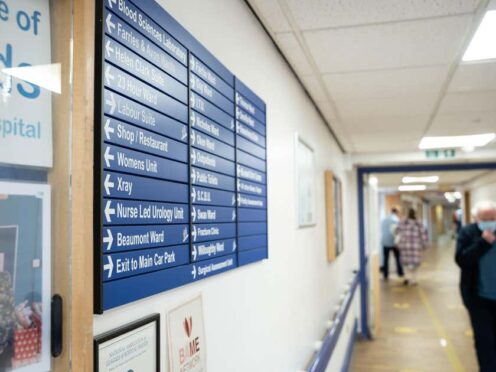More than 2,000 NHS buildings in England predate the health service itself, according to new research, sparking concerns about the safety of patients and staff.
Sewage leaking from sinks onto wards when it rains was among the issues reported in older buildings, as well as lifts breaking down multiple times a day.
One hospital is understood to have been using its intensive care unit as a storeroom as it had deemed it unsafe for patients.
NHS Providers, which represents health trusts, warned that the “safety of patients and staff is at risk”, with too many NHS buildings and equipment “in a very bad way”.
The analysis of NHS Digital data by the Liberal Democrats found 34 of 211 NHS trusts had at least one in four buildings which had been standing before 1948 – the year the NHS was founded.
Some 30 trusts had no buildings that pre-dated that year, the party found.
Lib Dem health and social care spokeswoman Daisy Cooper described the situation as a “national scandal”, with millions of people “treated in old and crumbling hospitals that are no longer fit for purpose”.
The party is calling on the Government to establish an urgent fund to improve hospital safety, saying patients and healthcare staff deserve “dignity”.
“Patients and staff deserve the dignity of safe, modern and clean hospitals,” Ms Cooper said.
“But instead, this Government has shamefully chosen to raid capital budgets for fixing crumbling buildings to plug the gap in day-to-day costs, while hospitals are literally falling apart.”
The new analysis comes after freedom of information data obtained by the Liberal Democrats showed there were more than 18,000 pest problems reported at NHS hospitals in England over the last three years.
Problems included rats on maternity wards, rodents in kitchens, wasps nests in imaging areas, maggots in a mortuary and ants “coming through the ceiling”.
One hospital said “black insects are biting the legs of staff”, that the “whole building has a fly infestation”, and animal noises were coming from inside the walls.
Meanwhile, another hospital discovered rat droppings in a body bag, while another found a headless pigeon.
In 2020, the Government announced its New Hospital Programme (NHP) which pledged to build 40 new hospitals by 2030.
In May 2023, ministers committed to prioritising rebuilding facilities that included reinforced autoclaved aerated concrete (Raac).
But a National Audit Office (NAO) report published in July said the NHP initiative was facing delays, which meant the target of 40 hospitals would not be met.
Ms Cooper added: “Rishi Sunak needs to get a grip and announce a plan to fix our crumbling hospital buildings.
“Patients should not have to pay the price for this Conservative government’s chronic neglect of the health service.”
Saffron Cordery, deputy chief executive of NHS Providers, said: “Far too many NHS buildings and equipment are in a very bad way and the situation is just getting worse year after year.
“The safety of patients and staff is at risk. NHS trusts have an £11 billion-plus list of essential repairs waiting to be done and the backlog is mounting at an alarming rate.
“The eye-watering cost of trying to keep creaking buildings and out-of-date facilities going is soaring.
“We need a big injection of government investment so that mental health, community, hospital and ambulance services can tackle significant risks to patients and staff.
“To be properly equipped to give people first-class care, the NHS needs safe, 21st century buildings and facilities.”
A Department of Health and Social Care spokesperson said: “We’re investing record sums to upgrade and modernise NHS buildings, with £4.2 billion invested last year alone, which has helped us achieve the biggest five-month fall in waiting lists in the past 10 years.
“This is on top of expected investment of over £20 billion for the New Hospital Programme – with four hospitals already open and another four due to follow this financial year and a further £1.7 billion for more than 70 hospital upgrades.”
